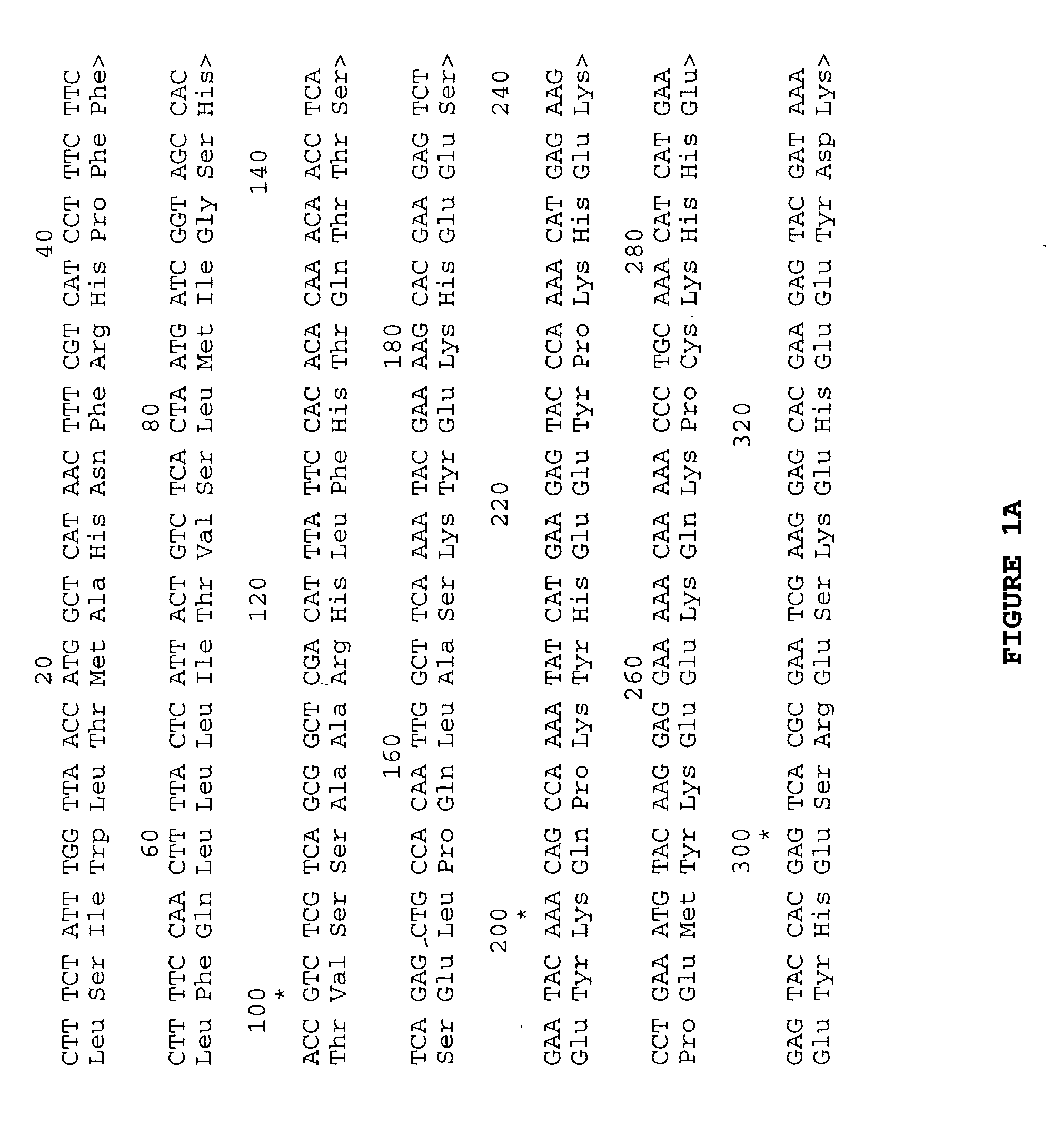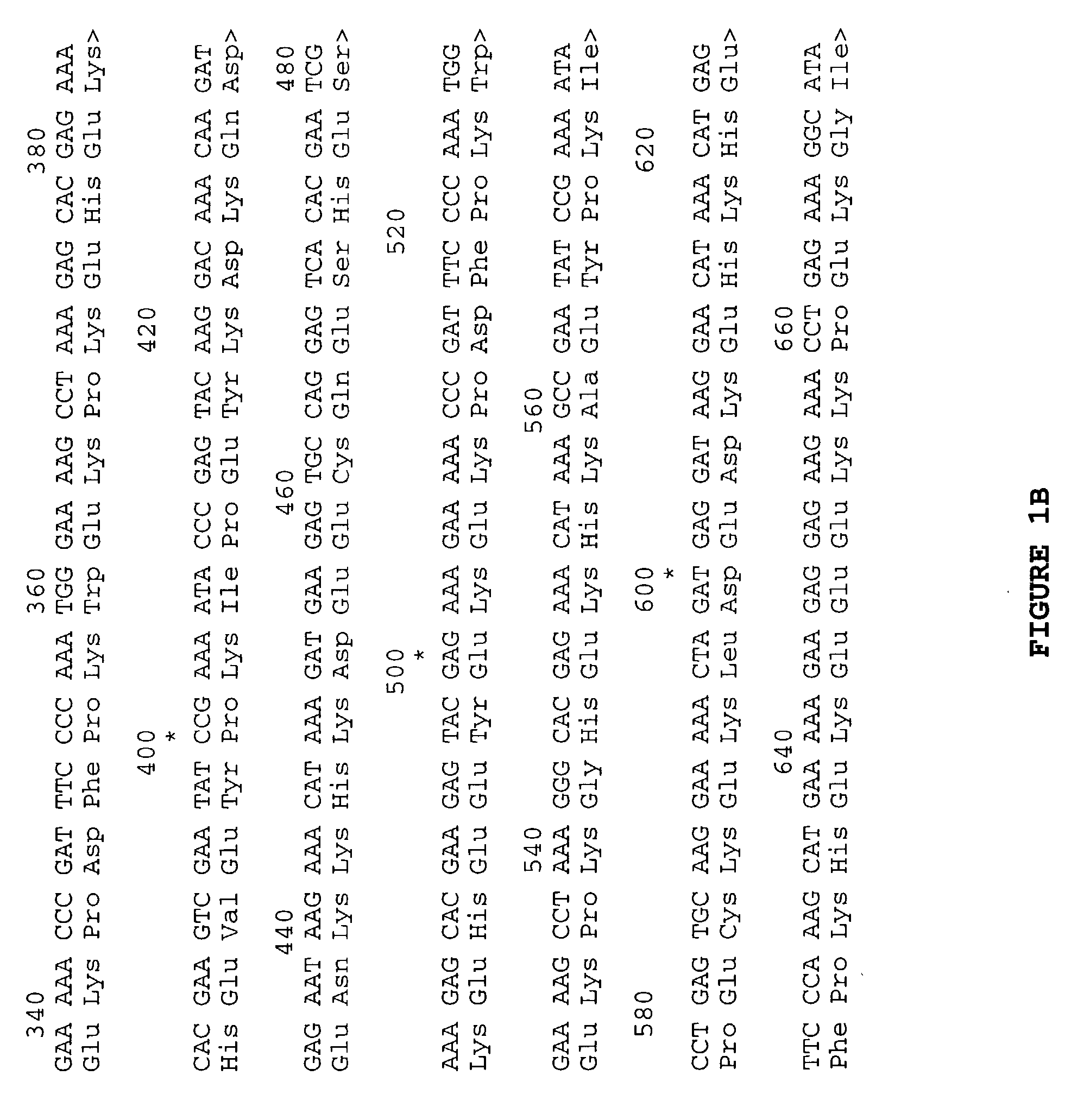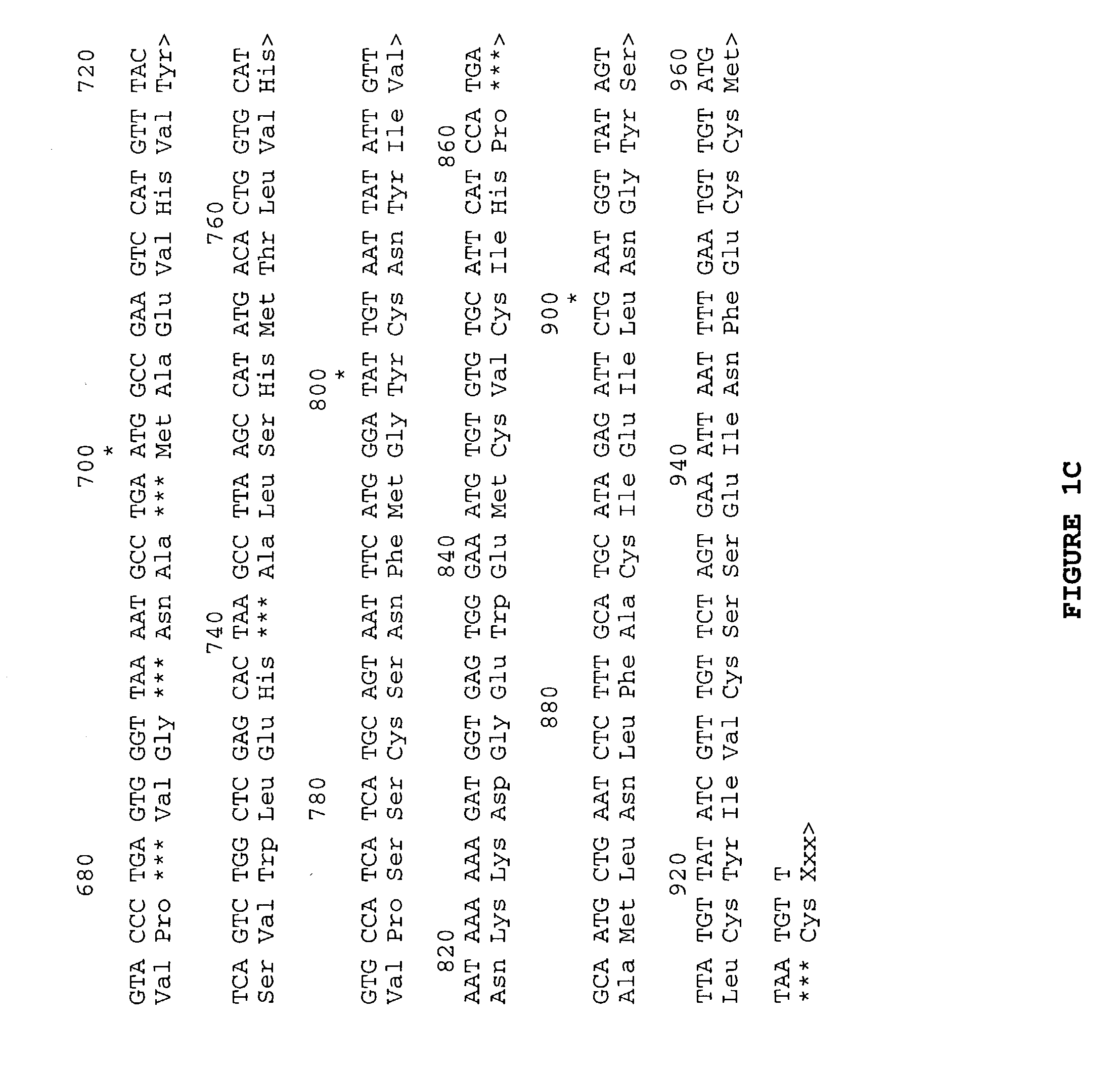Cotton fiber transcriptional factors
a transcription factor and cotton fiber technology, applied in the direction of lysine, peptide source, peptide, etc., can solve the problems of plant melanin production, fiber-tissue transcription initiation regions of this invention are typically not readily detectable in other plant tissues,
- Summary
- Abstract
- Description
- Claims
- Application Information
AI Technical Summary
Problems solved by technology
Method used
Image
Examples
example 2
Isolation of cDNA Clones from Cotton
[0068] cDNA to the 4-4 clone was isolated from the cotton fiber library described above, and shown to express in fiber but not other tissues. This sequence was not related to any known protein. Only 400 kb of encoding sequence was present in this clone, so the library was rescreened using the cDNA to obtain full-length clones. The full-length encoding sequence is provided in FIG. 1.
[0069] Another clone was sequenced which showed high homology to animal Rac proteins. This clone, designated Rac13, was not quite full-length, and the library was re-screened using this initial Rac13 DNA segment as probe. Of approximately 130,000 primary plaques screened, 56 screened positive; of these, 14 clones were isolated and sequenced. Of these 14 clones, 12 showed identical sequence homology to the original Rac13 clone and one of these cDNA clones encoded a full length Rac13. One other partial-length cDNA clone, designated Rac9, was clearly related, but distinct ...
example 3
Expression of Cotton Fiber Genes in Developing Fibers
[0071] Expression of the Rac13 and 4-4 genes was assessed using mRNA prepared from various cotton tissues and from fibers at different stages of development. Blots were hybridized with probes derived from 3'-untranslated regions of either the Rac13 or 4-4 genes. The gene for Rac13 exhibits highly-enhanced expression in fibers; virtually no detectable mRNA is present in leaves, roots, or flower parts, even under conditions of extended development time. Rac13 expression is detected in seeds at an age that corresponds to the highest expression levels observed in fiber tissue derived from seeds of this same age. The pattern of Rac13 expression in fibers is very dependent upon the developmental stage. Expression is very low during the stage of primary wall synthesis (0-14 dpa, see Meinert and Delmer, 1977), reaches a maximum during the transition to secondary wall synthesis (about 15-18 dpa), and declining during the stage of maximal s...
example 4
[0072] cDNA for both the 4-4 and Rac13 was used to probe for genomic clones. For both, full length genomic DNA was obtained from a library made using the lambda dash 2 vector from Stratagene.TM., which was used to construct a genomic DNA library from cotton variety Coker 130 (Gossypium hirsutum cv. coker 130), using DNA obtained from germinating seedlings.
PUM
| Property | Measurement | Unit |
|---|---|---|
| Transport properties | aaaaa | aaaaa |
Abstract
Description
Claims
Application Information
 Login to View More
Login to View More - R&D
- Intellectual Property
- Life Sciences
- Materials
- Tech Scout
- Unparalleled Data Quality
- Higher Quality Content
- 60% Fewer Hallucinations
Browse by: Latest US Patents, China's latest patents, Technical Efficacy Thesaurus, Application Domain, Technology Topic, Popular Technical Reports.
© 2025 PatSnap. All rights reserved.Legal|Privacy policy|Modern Slavery Act Transparency Statement|Sitemap|About US| Contact US: help@patsnap.com



